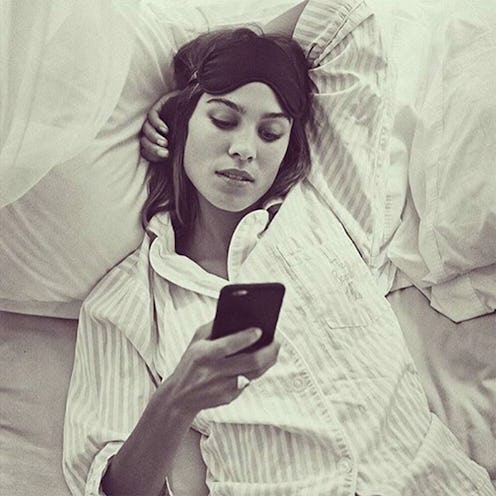Insomnia has become such the norm in our lives that we now consider sleep to be a priceless luxury, one we would do almost anything to experience in the midst of a desperately zzz-free night. Though there are countless homeopathic, over-the-counter and prescription options to aid us in this endeavor, we think it smart to first start by assessing the environment in which we’re attempting to snooze the night away. There are many ways to optimize a bedroom for sleep: By making just a few small tweaks, you can transform your insomnia zone into a haven for sweet dreams. Here, 6 changes you should make ASAP.
Mattress
You should replace your mattress approximately every eight years. (That’s right, it’s time to get rid of the mattress your mom bought you when she moved you into your first grown-up apartment all those years ago.) The best mattress allows you to sleep soundly and awake without stiffness, aches or pains. The only real way to know if a mattress is right for you is to try it—many shops will let you try out a mattress at home for a trial period.
Bedding
Contrary to popular belief, your sheets should top out at a thread count of 400, as anything higher than that requires a synthetic finish that will eventually dissipate and doesn’t actually increase the quality of the sheet. Your sheets should also be lightweight enough that you can stand to sleep beneath them if it’s stuffier or hotter than usual in your room. Egyptian or pima cotton are ideal options, but you can and should adjust the sheets you use seasonally. Wash them every 7-10 days, and replace them every 18-24 months.
Hypoallergenic down comforters are ideal, as is at least one satin pillowcase. Try to include an assortment of pillows in various shapes and degrees of firmness so you can use them to lift or support different parts of your body as needed. Adding a cashmere throw into the mix feels ultra luxe for chilly evenings and an extra snug vibe. All of this bedding is a worthwhile investment, as the idea is to create an environment you’re dying to climb into every night.
Red Light, Blue Light
Red Light Therapy is a real thing: Red light is proven to have a calming effect that leads to reduced anxiety and better sleep. Infrared bulbs can be found on Amazon or at your local pet store (in the reptile section, of all places). Light one at night, and you should notice a difference in sleep quality immediately.
Blue light, on the other hand, is the enemy of good sleep. This type of light emanates from all of your devices, so if you’re the type to fall asleep with the laptop on, try using f.lux, which will automatically adjust your screen to remove unwanted blue light at night.
Pink Noise
Pink noise—or noise which has equal energy per octave—has been shown to regulate brain waves and increase sleep quality. A fan will do the trick, or you can download one of several pink noise apps (like this one) to play through your phone or computer while you sleep (sans headphones).
Feng Shui
First and foremost, sleeping should be the primary activity that takes place within the four walls of your bedroom. Clutter should be cleared generally, and specifically absent from on or under the bed itself. Make sure to sweep or vacuum frequently to reduce allergens, and add a plant or two into the mix if possible. Studies also show that people who make their bed each morning sleep better at night, so now may finally be the time to hearken to mom’s favorite childhood nag.
Temperature
At night, your thermostat should be set to a temperature at least five to ten degrees lower than it would be during the day, or under 70 degrees Fahrenheit. The earlier you cool down your room, the faster you will fall asleep.
